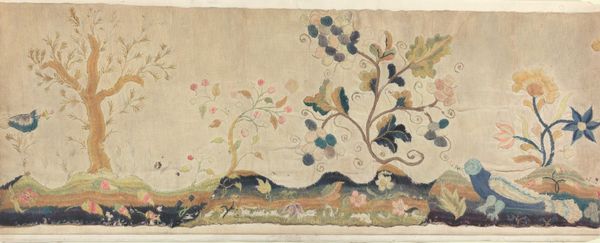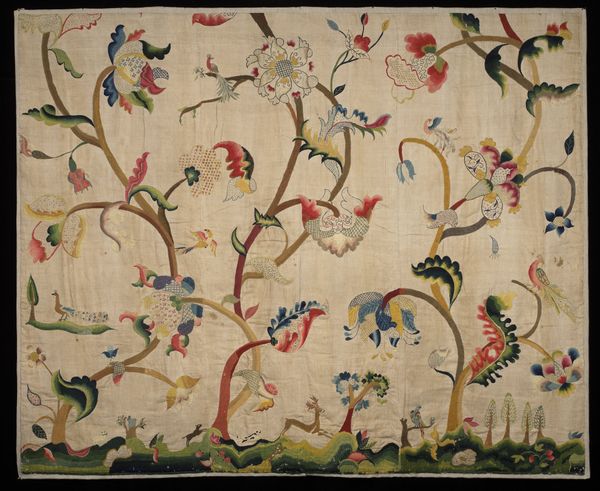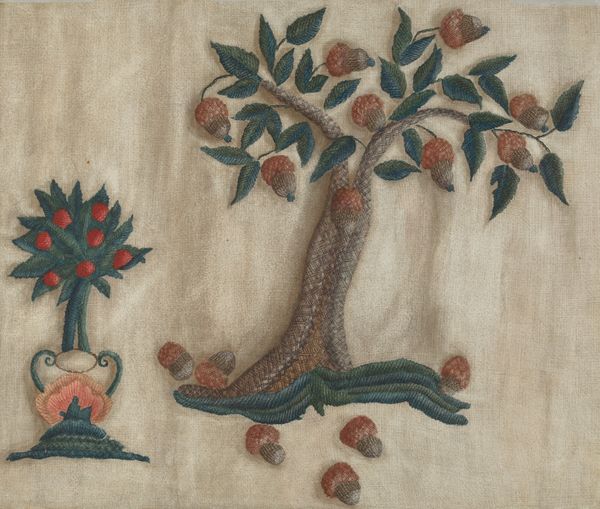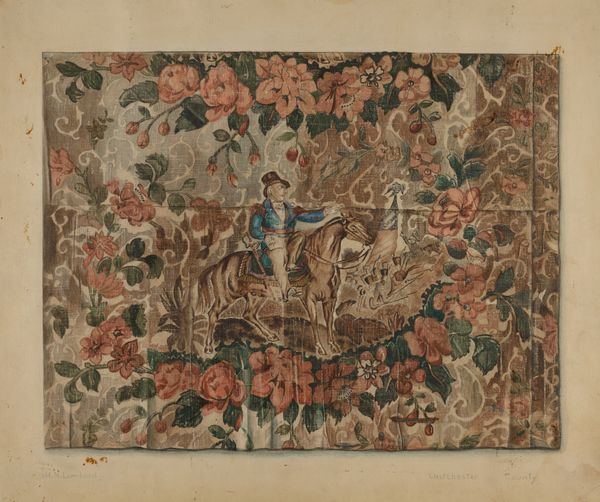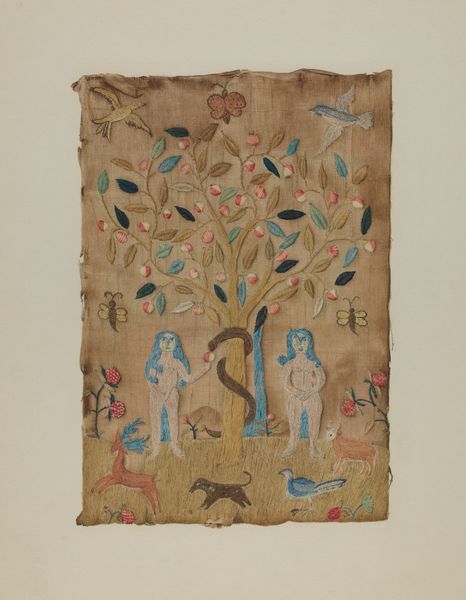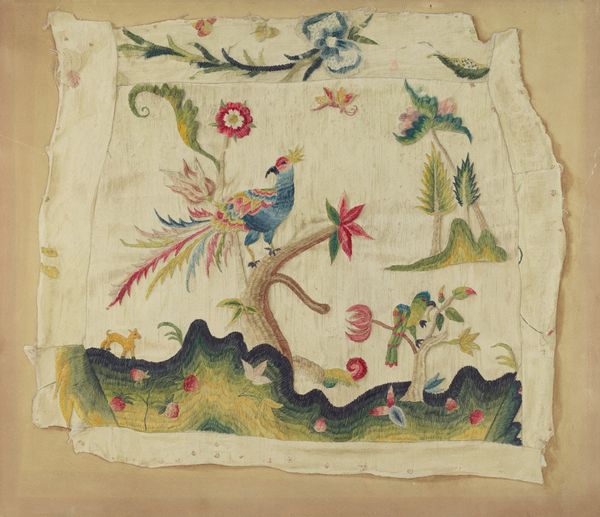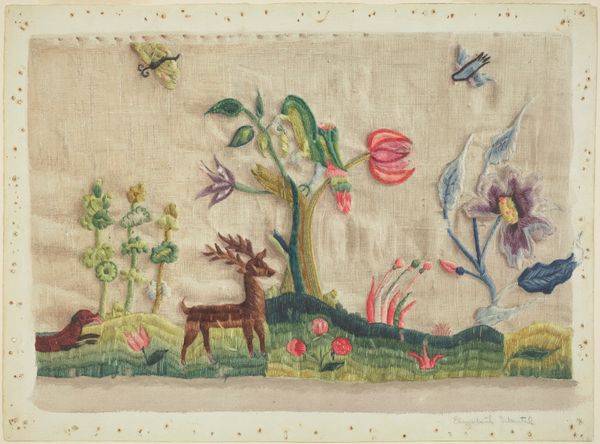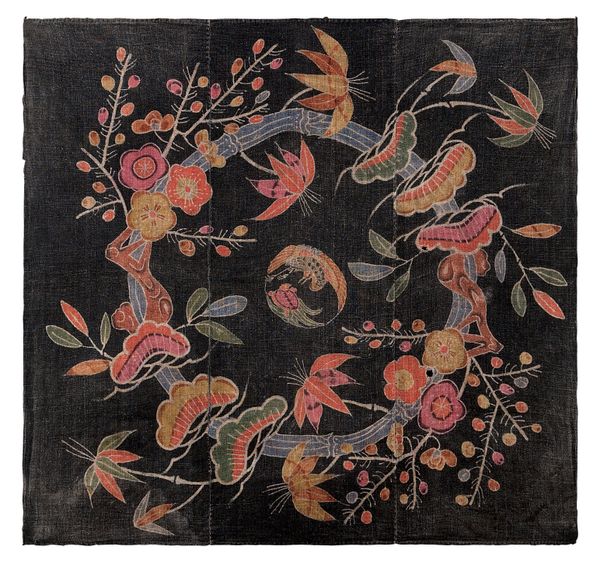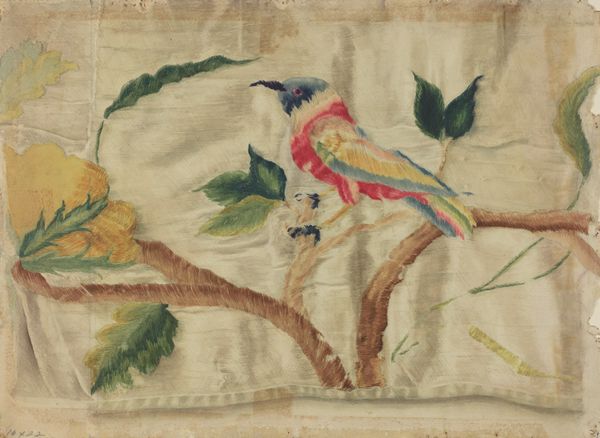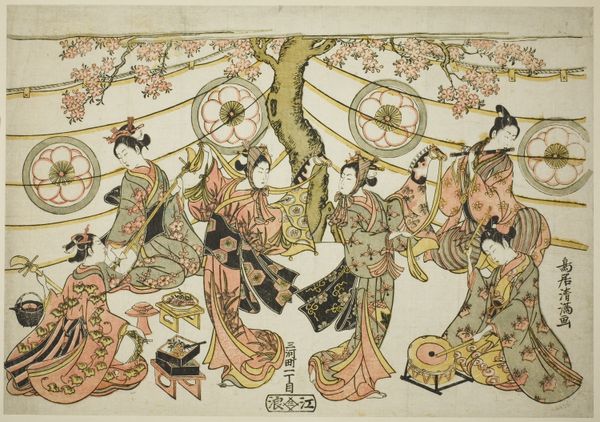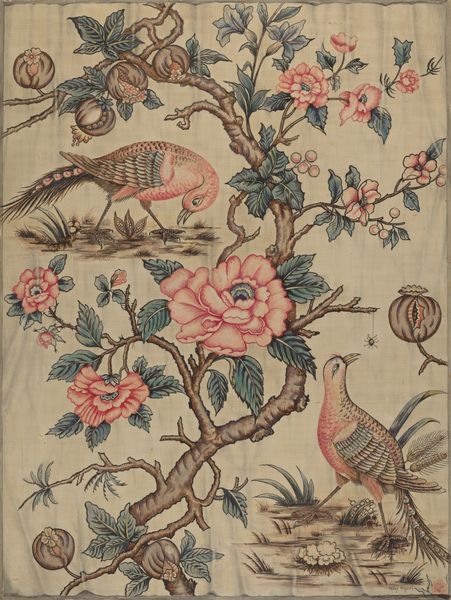
textile
#
asian-art
#
landscape
#
textile
#
figuration
#
folk-art
#
orientalism
Dimensions: overall: 38.5 x 46.6 cm (15 3/16 x 18 3/8 in.) Original IAD Object: 17 1/8" high; 21 1/2" wide
Copyright: National Gallery of Art: CC0 1.0
Editor: Here we have "Chair Seat," a textile piece made sometime between 1935 and 1942. The embroidered scene feels almost dreamlike, with these vivid birds and serene deer populating this gently sloping landscape. What kind of stories do you think this piece is telling? Curator: It's interesting to consider this work through the lens of Orientalism and its impact on folk art traditions. The imagined "East" became a site where Western artists projected fantasies, influencing how artisans depicted their own cultures. This seat cover, while seemingly innocent, partakes in that dynamic. Where do we see evidence of this projection, and how might it differ from lived experiences? Editor: I see the exoticized birds, maybe? They seem less like realistic animals and more like symbolic representations. Is it fair to say that pieces like this end up reinforcing stereotypes? Curator: Exactly. While appearing decorative, they reinforce Western notions of Asian art being delicate, ornamental. By not reflecting the full, complex history and diverse social issues present at that time, this artwork unintentionally perpetuates a narrow and potentially harmful perspective, despite its beauty and the individual artist's intention. But does acknowledging this limit our appreciation of the piece? Editor: That’s a good question. I think recognizing the cultural baggage helps us to understand it more completely. Knowing where the images come from lets us appreciate the artist’s skill, while also staying critical. Curator: Precisely. Context is key, always. By situating the "Chair Seat" in the tapestry of Orientalism, folk art, and textile production, we understand how culture shapes artistic vision. I hope this exploration helps to expand your viewpoint and your critical vocabulary. Editor: I agree. This was eye-opening. I’ll definitely look at similar works with a fresh perspective.
Comments
No comments
Be the first to comment and join the conversation on the ultimate creative platform.
